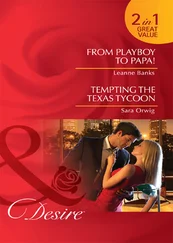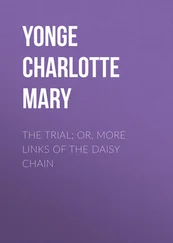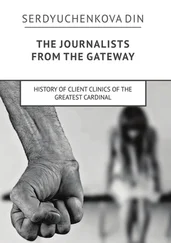There were, however, less exalted reasons for the popularity of juries. Trials simply offered a lot to see. Courts were becoming more packed than ever, regularly punctuated by fights and occasionally the scene of gunshots and murders. * Entire communities could be agitated: perhaps most literally when the weight of spectators at East Grinstead in 1684 caused the floor to collapse, and perhaps most metaphorically during the notorious witchcraft prosecutions of Salem eight years later. * Attendance also became an essential part of any respectable person’s education during the eighteenth century, as edifying as a trip to the local condemned cells or lunatic asylum. Foreign travellers, hoping to glean lessons about English liberty, became regulars. Gentlemen in the public gallery, eager to contribute to the increasingly legalistic debates, would sometimes interrupt to identify defects in the indictment and advance points in favour of a defendant.
The Old Bailey retained its particular cachet, with one observer complaining by 1786 that ‘no one who hath any real business to do can have access’, but provincial sittings, or assizes, offered a show that was in many ways even more fascinating. Judges would roll into town twice each year, solemn as sphinxes in their crimson robes and longbottomed wigs and preceded by up to twenty trumpeters and javelin-wielding officials. As they were wined and dined by the ruddy squires of the county, surrounding dungeons trembled into life. Prisoners clanked their way to the courthouse through the night, and after a sermon and swearing-in ceremony the next morning, the jurors would get to work on their case load – typically deciding within minutes whether to acquit or convict. Anyone found guilty of murder would receive an immediate sentence of death, but other convicts would be holed up to await the assizes’ grand finale. The judge would, on the appointed day of judgment, work his way up the ladder of wickedness and close the proceedings with one of two props. If he was going to leave with no blood on his hands, he would pull on a pair of white gloves. Rather more often, he would deliver his final sentences wearing the black cap of death.
The media mirrored and magnified the appeal of such occasions. Literacy had been sufficiently prevalent to generate junk journalism since the late sixteenth century, and by the eighteenth, true-crime pamphlets were routinely vying for public attention alongside other staples of the hack printer: recent comets, monstrous births, and so on. Continental writers, excluded from courtrooms and usually subject to censorship, could sometimes exploit the sexual scandals that were played out in ecclesiastical courts but were otherwise restricted to writing about the crime that preceded a trial and the punishment that followed it. Their British counterparts faced no such obstacles.
A twenty-four-page booklet had set the ball rolling in August 1566 with an account of the prosecution of Agnes Waterhouse – condemned for witchery with a diabolical dog and a white cat called Satan – and trial reports were soon a fixture on the pedlar’s cart. The cut-and-thrust of cross-examination usually offered ready-made dialogue. Even when absent the drama could be gripping: a report from the early seventeenth century, for example, told how the blanched corpses of three children began to bleed reproachfully when their murderous father obeyed a judge’s order to call out their name. One popular 1606 story neatly combined speech and silence, telling of a poor little dumb girl who had managed to croak accusingly at the man who had torn out her tongue notwithstanding that the jurors could ‘not see so much as [a] stumpe’ in her mouth. The evidence evidently spoke no less eloquently: the defendant went to the gallows.
By the 1670s, suitably salacious and brutal trials were being reported within days of a verdict. Eager readers in 1698 might have chosen to consider the depravity of Captain Edward Rigby, pilloried for attempted sodomy after picking up William Minton at a firework display in St James’s Park. Rigby pleaded guilty in the hope of a quiet life, but the court itself ordered that its proceedings be published. All literate England could soon pay to recoil from the news that he had ‘put his Privy Member Erected into Minton’s Hand; kist him, and put his Tongue into Minton’s Mouth’ before expounding on the antiquity of anal intercourse and placing a ‘Finger to [his] Fundament’. There were salutary lessons to suit every taste. Someone disinclined to weigh the wages of sin might, for example, have preferred to contemplate the quality of mercy – perhaps by pondering the luck of Mary Price, acquitted of bestiality in 1704 notwithstanding her housemate’s claims to have watched through the floorboards as she copulated with a dog.
But although jury trials were offering much to mull over by the eighteenth century, another aspect of criminal justice was still far more visible: the punishments that followed them. Tattooed and maimed convicts stalked the streets of every city, while lesser deviants sat in stocks and dangled from pillories, braving rotting animals and vegetables if they were lucky and storms of rocks if they were not. The displays were a feature of the landscape from Nuremberg to New York, but they were becoming especially impressive in England. Although a 1718 statute providing for transportation to the colonies removed plenty of convicts from the public gaze, public mutilations continued apace and the number of capital offences also soared – from about fifty in 1688 to well over two hundred in 1810. Few villages lacked for a whipping post, while executions could turn the humblest provincial town into a fairground, drawing thousands of visitors and pumping a fortune into the local economy.
London hosted the grandest spectacle of all, spewing out capital offenders from Newgate every six weeks for transportation across the capital to the Tyburn gallows. The procession had grown increasingly animated during the seventeenth century, and by the 1720s it was tumultuous indeed. The condemned travelled in open carts, noosed and astride their own coffins, as church bells tolled and crowds cheered them on their way. They wore anything they chose – perhaps velvet, scarlet, and silk with a white cockade to protest their innocence, perhaps a simple burial shroud to acknowledge their guilt – while high-spirited onlookers handed up tankards of ale, asking only that the prisoners buy a round on the way back. The jollity reached a climax under the triangular beams of Tyburn. Convicts who spoke with grace or humour received roars of approbation, while the surly and the sullen were booed and pelted. When the bodies were finally ‘turned off’ and the souls ‘launched into eternity’, to use the clichés of the day, chaos would erupt. While acquaintances of the dying tried to shorten their agonies by leaping for the dribbling, jerking legs, hangmen auctioned their clothes and emissaries from London’s surgeons’ colleges hopped from rope to rope in the hope of scavenging an unwanted cadaver.
The commotion, macabre even by the standards of the time, regularly attracted tens of thousands of spectators and exercised a fascination that spanned class and nationality. César de Saussure, a young Swiss gentleman who whiled away several months in London during the 1720s, was impressed enough to describe it at length in a letter to his mother. ‘You see most amusing scenes between the people who do not like the bodies to be cut up and the messengers the surgeons have sent for the bodies,’ he enthused. ‘Blows are given and returned before they can be got away, and sometimes in the turmoil the bodies are quickly removed and buried.’
Amusing it may have been, but the increasing frequency and intensifying violence of executions, at a time when juries were being sanctified and courtrooms were formulating rigid rules to guarantee fairness, had a peculiarly paradoxical effect. Trials became almost perverse rituals of cruelty and mercy, at which the dignity afforded the defendant resembled nothing so much as the head start given a fox. Whether a suspect lived or died was in many ways less important than that the chase proceeded by the rules. The responsibility for punishment was meanwhile shuffled around court until it belonged to everyone and no one, and all were free to lament the fate of the person they were killing. At a time when English and American juries were becoming celebrated for their ‘pious perjury’ – undervaluing stolen goods so as to spare petty thieves the gallows – they continued to convict most capital offenders (a full two-thirds in England, of whom 90 per cent in London were under twenty-one). The role played by judges was no more coherent. While they typically warned juries of the awful consequences of leniency, they simultaneously repaired the damage behind the scenes – recommending so many pardons that three out of four English death sentences were being commuted by the end of the eighteenth century.
Читать дальше
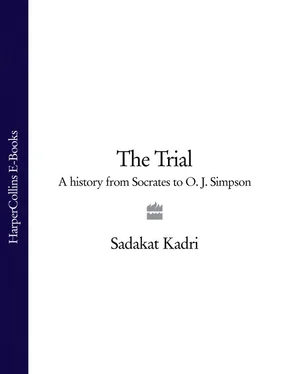

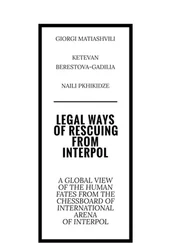

![Theresa Cheung - The Dream Dictionary from A to Z [Revised edition] - The Ultimate A–Z to Interpret the Secrets of Your Dreams](/books/692092/theresa-cheung-the-dream-dictionary-from-a-to-z-r-thumb.webp)
